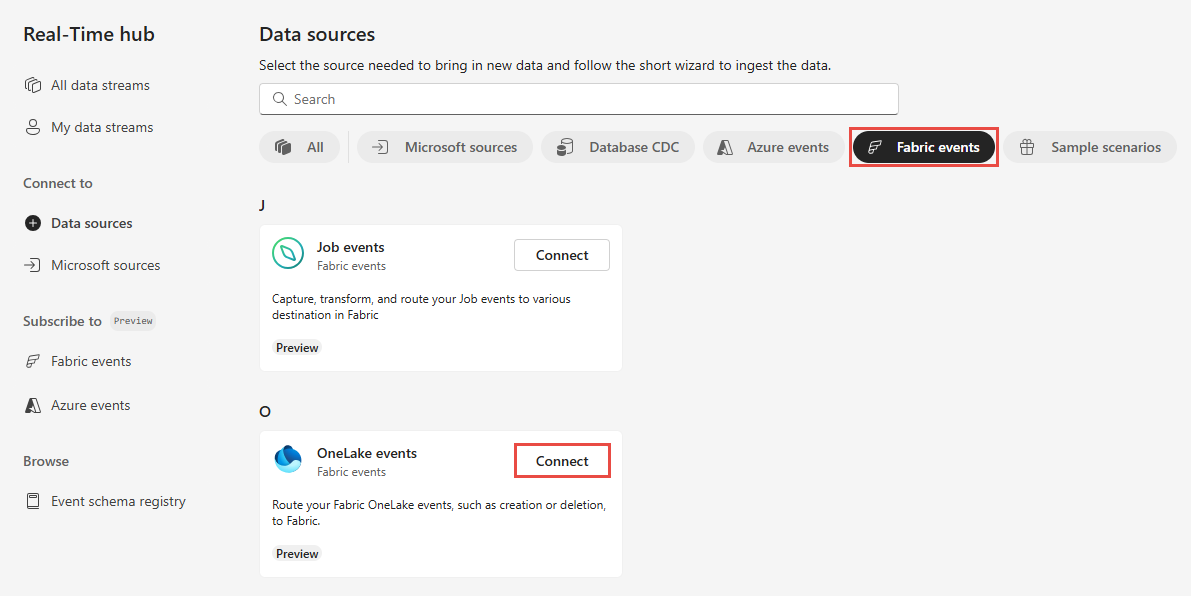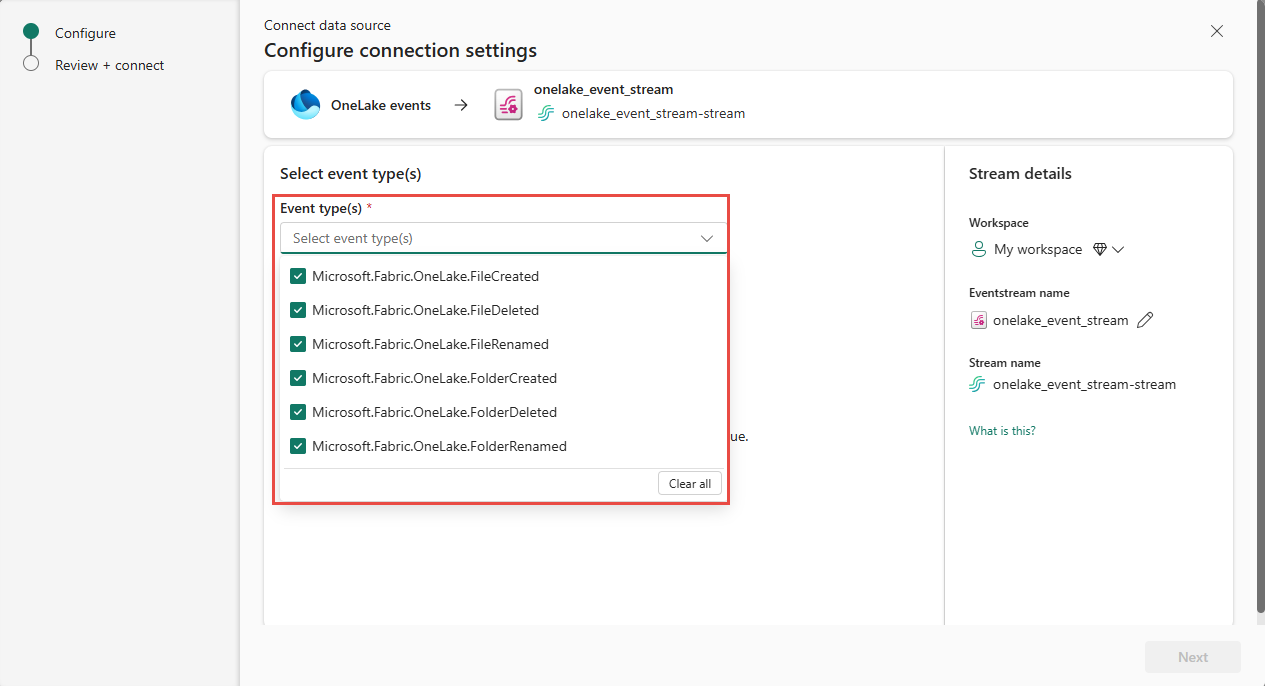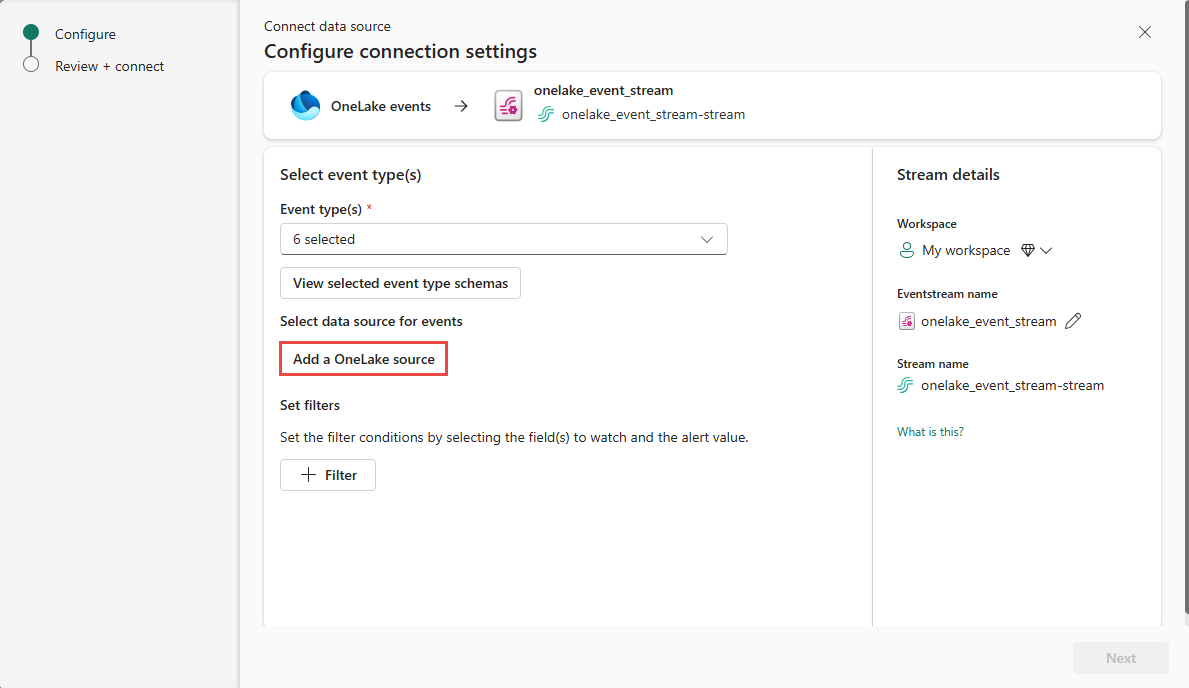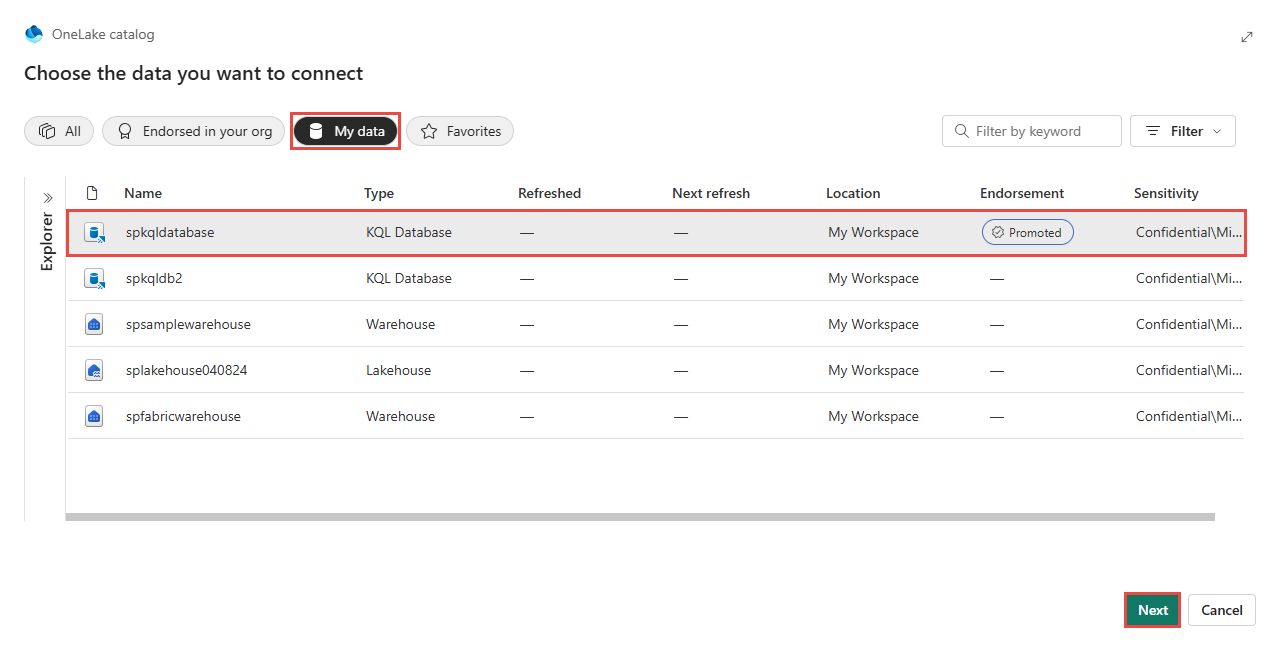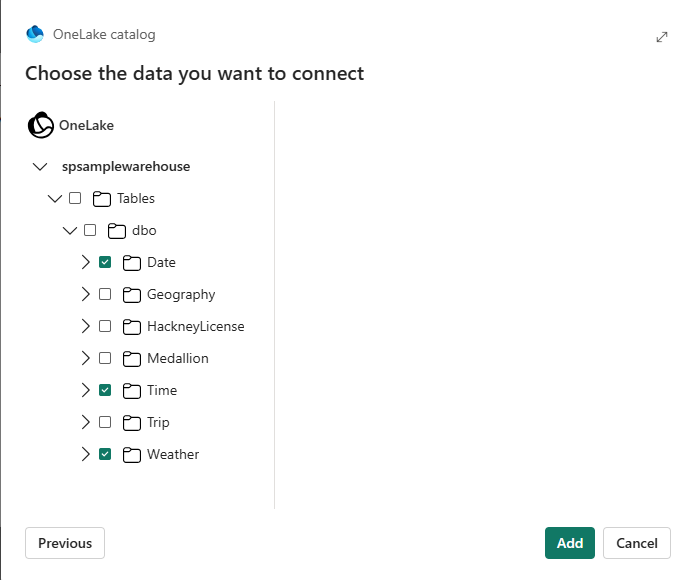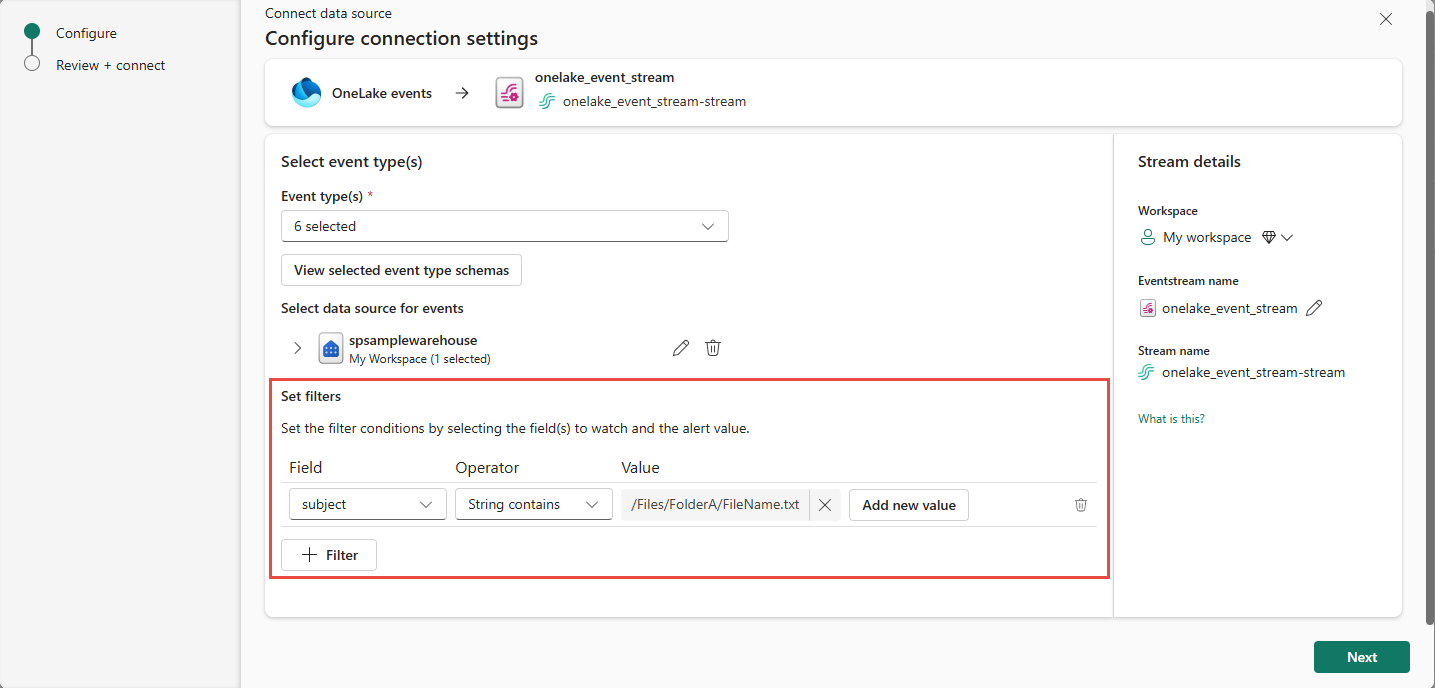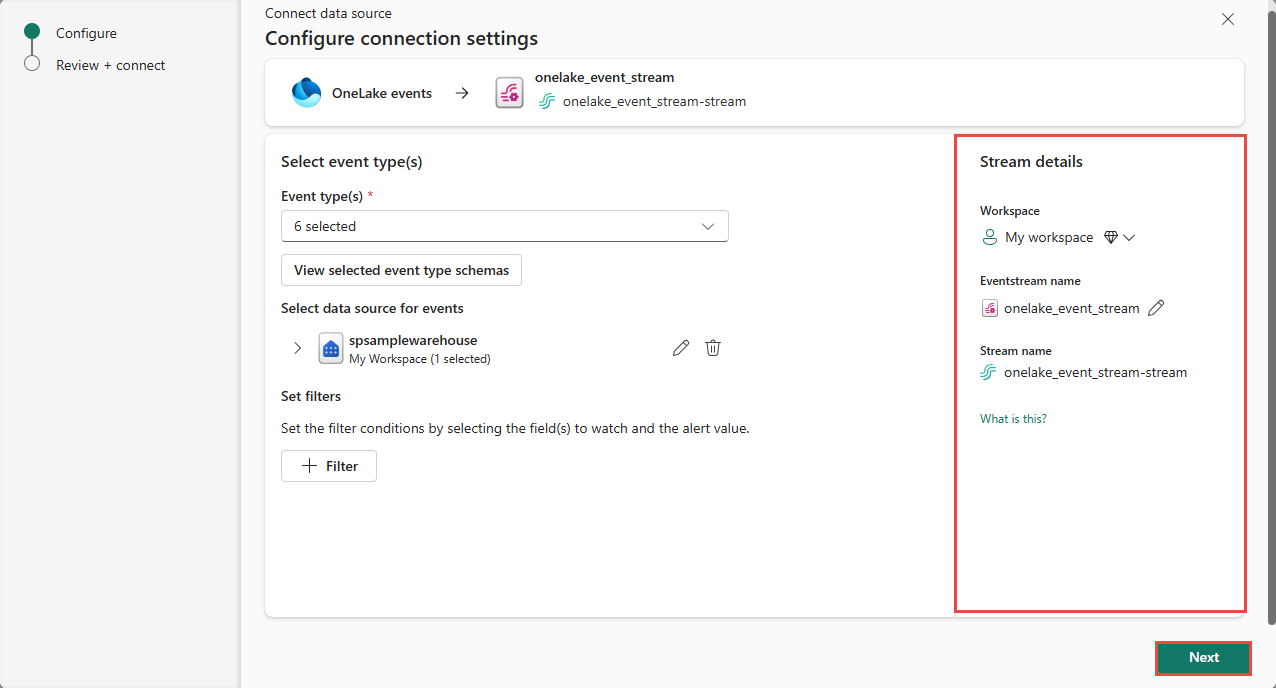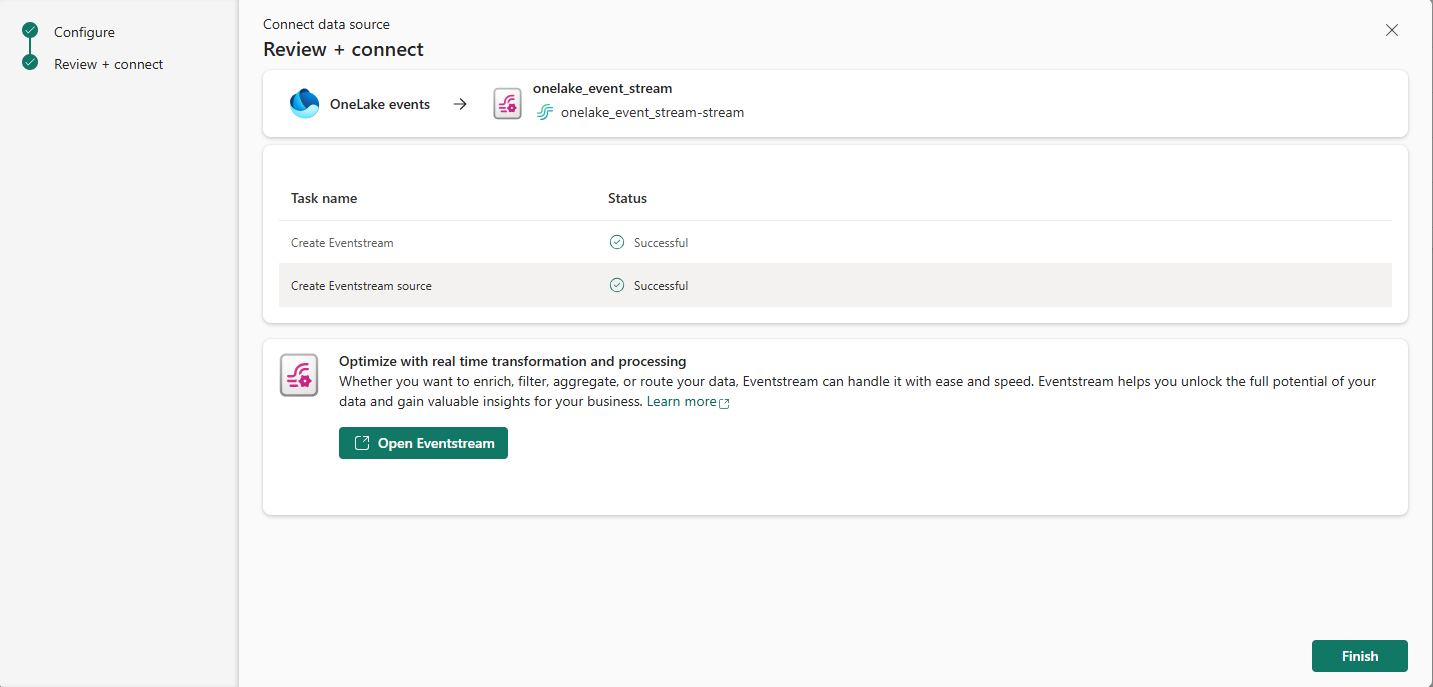Get OneLake events in Fabric Real-Time hub (preview)
This article describes how to get OneLake events as an eventstream in Fabric Real-Time hub.
Real-Time hub allows you to discover and subscribe to changes in files and folders in OneLake, and then react to those changes in real-time. For example, you can react to changes in files and folders in Lakehouse and use Data Activator alerting capabilities to set up alerts based on conditions and specify actions to take when the conditions are met. This article explains how to explore OneLake events in Real-Time hub.
With Fabric event streams, you can capture these OneLake events, transform them, and route them to various destinations in Fabric for further analysis. This seamless integration of OneLake events within Fabric event streams gives you greater flexibility for monitoring and analyzing activities in your OneLake.
Event types
Here are the supported OneLake events:
| Event type name | Description |
|---|---|
| Microsoft.Fabric.OneLake.FileCreated | Raised when a file is created or replaced in OneLake. |
| Microsoft. Fabric.OneLake.FileDeleted | Raised when a file is deleted in OneLake. |
| Microsoft. Fabric.OneLake.FileRenamed | Raised when a file is renamed in OneLake. |
| Microsoft.Fabric.OneLake.FolderCreated | Raised created when a folder is created in OneLake. |
| Microsoft. Fabric.OneLake.FolderDeleted | Raised when a folder is deleted in OneLake. |
| Microsoft. Fabric.OneLake.FolderRenamed | Raised when a folder is renamed in OneLake. |
For more information, see Explore OneLake events.
Note
Consuming Fabric and Azure events via eventstream or Fabric Activator isn't supported if the capacity region of the eventstream or Activator is in the following regions: West India, Israel Central, Korea Central, Qatar Central, Singapore, UAE Central, Spain Central, Brazil Southeast, Central US, South Central US, West US 2, West US 3.
Prerequisites
- Access to a workspace in the Fabric capacity license mode (or) the Trial license mode with Contributor or higher permissions.
Create streams for OneLake events
You can create streams for OneLake events in Real-Time hub using one of the ways:
Data sources page
Sign in to Microsoft Fabric.
If you see Power BI at the bottom-left of the page, switch to the Fabric workload by selecting Power BI and then by selecting Fabric.
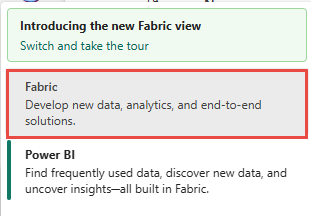
Select Real-Time on the left navigation bar.

On the Real-Time hub page, select + Data sources under Connect to on the left navigation menu.
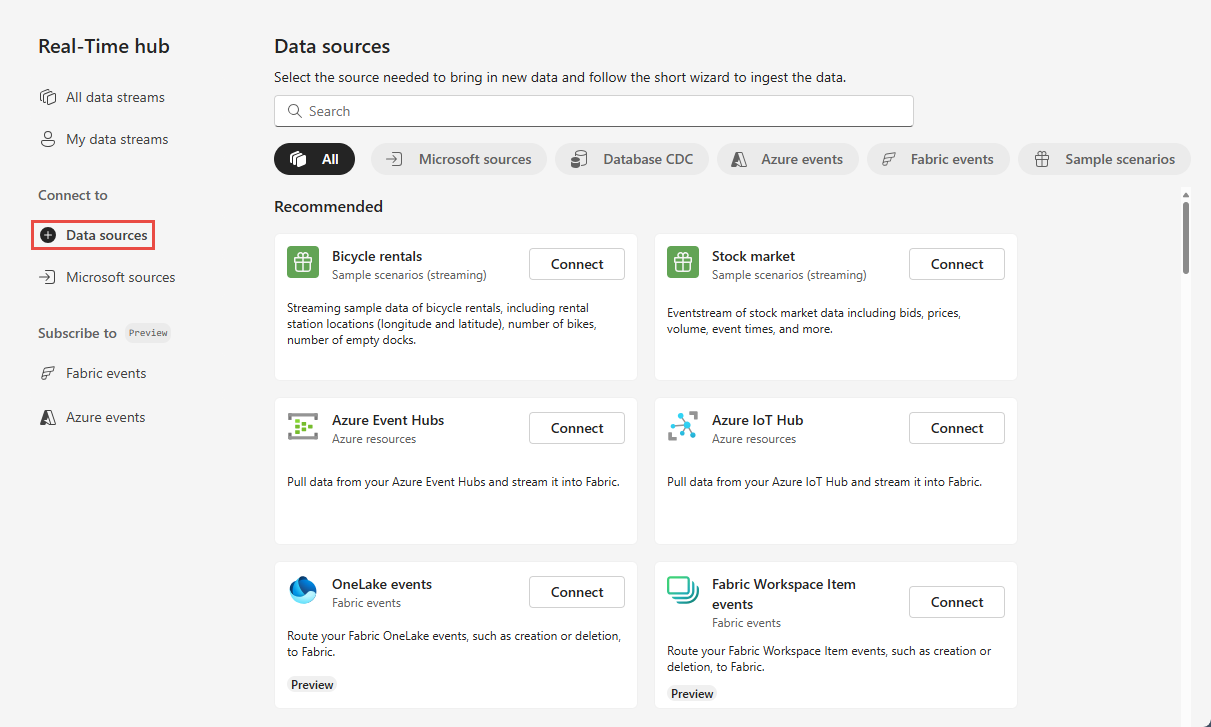
You can also get to the Data sources page from All data streams or My data streams pages by selecting the + Connect data source button in the top-right corner.
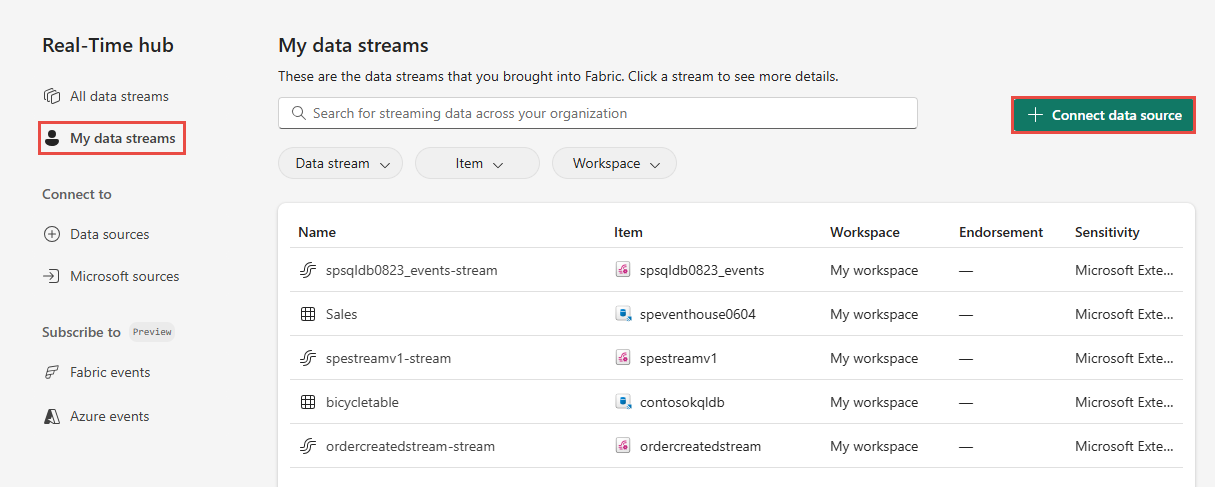
On the Data sources page, select OneLake events category at the top, and then select Connect on the OneLake events tile. You can also use the search bar to search for OneLake events.
Now, use instructions from the Configure and create an eventstream section.
Fabric events page
In Real-Time hub, select Fabric events on the left menu. You can use either the list view of Fabric events or the detail view of OneLake events to create an eventstream for OneLake events.
Using the list view
Move the mouse over OneLake events, and select the Create Eventstream link or select ... (Ellipsis) and then select Create Eventstream.
Using the detail view
On the Fabric events page, select OneLake events from the list of Fabric events supported.
On the Detail page, select + Create eventstream from the menu.
Now, use instructions from the Configure and create an eventstream section, but skip the first step of using the Add source page.
Configure and create an eventstream
On the Connect page, for Event types, select the event types that you want to monitor.
This step is optional. To see the schemas for event types, select View selected event type schemas. If you select it, browse through schemas for the events, and then navigate back to previous page by selecting the backward arrow button at the top.
Select Add a OneLake source under Select data source for events.
On the Choose the data you want to connect page:
View all available data sources or only your data sources (My data) or your favorite data sources by using the category buttons at the top. You can use the Filter by keyword text box to search for a specific source. You can also use the Filter button to filter based on the type of the resource (KQL Database, Lakehouse, SQL Database, Warehouse). The following example uses the My data option.
Select the data source from the list.
Select Next at the bottom of the page.
Select all tables or a specific table that you're interested in, and then select Add.
Note
OneLake events are supported for data in OneLake. However, events for data in OneLake via shortcuts are not yet available.
Now, on the Configure connection settings page, you can add filters to set the filter conditions by selecting fields to watch and the alert value. To add a filter:
In the Stream details section to the right, follow these steps.
- Select the workspace where you want to save the eventstream.
- Enter a name for the eventstream. The Stream name is automatically generated for you.
Then, select Next at the bottom of the page.
On the Review + connect page, review settings, and select Connect.
When the wizard succeeds in creating a stream, use Open eventstream link to open the eventstream that was created for you. Select Finish to close the wizard.
View stream from the All data streams page
In Real-Time hub, select My data streams or All data streams.
Confirm that you see the stream you created.
Related content
To learn about consuming data streams, see the following articles:
